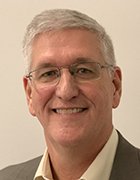
Sergey Nivens - Fotolia
SAP-Honeywell connected buildings app combines OT, IT data
The new Forge Real Estate Operations application from Honeywell and SAP marries operational data with enterprise data to help companies make better decisions on building usage.
Honeywell and SAP unveiled a new application for managing connected buildings.
Forge Real Estate Operations (FREO) is a cloud application that combines operational data (OT) from the Honeywell Forge platform with enterprise data from SAP ERP and other systems, and melds it into the SAP Analytics Cloud platform.
The FREO application is designed to help companies manage their buildings more effectively and plan for more optimized usage. It is built on the SAP Business Technology Platform, a development and integration platform, and it is the first offering from a partnership with SAP and Honeywell that began one year ago.
The marriage of OT and IT data by enterprise vendors has been a trend for manufacturing applications, but applying it to a connected buildings application is a promising new direction, according to analysts.
Usman Shuja, vice president and general manager of connected buildings at Honeywell, said the app addresses several real estate-related use cases, two of which directly stem from the COVID-19 pandemic.
First, the app can provide an analysis for corporate building owners to determine the proper way to get employees back into buildings after the long stretch of working from home; second, the app can help determine how to structure an organization's real estate footprint requirements going into the future, as hybrid workplaces become the norm. Third, the FREO app can help businesses focus on sustainability by, for example, helping reduce energy usage.
 Usman Shuja
Usman Shuja
"We think about the market in two categories: one is evergreen priorities, and then there are COVID-related priorities," Shuja said. "Things like an occupant experience demanding forecasts [of usage] are new, while things like sustainability, energy savings and avoiding destruction have always been there."
Combining IoT data with ERP data
FREO uses data in the Honeywell Forge platform that's gathered by IoT sensors for building operations, like energy usage, and combines this with SAP ERP data like the cost of that energy or building lease obligations.
"In order to deliver all these three [use cases], you need a combination of IT and OT data," Shuja said. "Electrical consumption, for example, is OT data. But the actual electric consumption costs is IT data, water consumption costs is IT data. What you can save though recycling is all coming from IT. You need to have that combination in order to get a complete picture."
 Ginger Smith
Ginger Smith
Companies that use multiple buildings or educational institutions have to have good data on how much capacity they will need going forward, said Ginger Smith, director of strategic partnerships at Honeywell Connected Enterprise, a business unit within Honeywell.
"If you are planning on getting people back into the office, you need to look at safety and capacity, making sure that capacity for getting people back into a building is at the right number for that space," Smith said. "Then on the flip side, you need to understand how much you're spending on that building, and if the spend matches how many people there."
 Johnny Clemmons
Johnny Clemmons
FREO is built on the SAP Business Technology Platform, which pulls in data from multiple systems and exposes the data to SAP Analytics Cloud for analysis, said Johnny Clemmons, global vice president for engineering, construction and real estate at SAP. This can include financial data, human resources data, and also experience data about how people feel about being in buildings via Qualtrics.
The idea is to make it easy to use all the data that's being gathered by these systems, Clemmons said.
"There's all this information sitting in different systems, and companies have been thinking about how to use it for a while, but it was just too difficult," he said. "You've always had the ability to connect this data in various ways, but you usually had to hire a systems integrator and spend 18 months or so putting the stuff together and trying to harmonize hardware. But FREO has all the connections built in -- Forge connects to almost any building system out there today. It's not dependent on Honeywell hardware."
 Predrag Jakovljevic
Predrag Jakovljevic
Joining OT and IT data
The marriage of OT and IT data is an emerging trend, said Predrag Jakovljevic, principal industry analyst at Technology Evaluation Centers. Other vendors, in addition to the SAP and Honeywell, have similar applications that combine OT and IT data -- primarily for manufacturing. They include Plex Systems' Smart Manufacturing Platform, Salesforce's Waylay Digital Twin platform, Siemens' Totally Integrated Automation Portal, PTC's ThingWorx, and QAD's cloud ERP platform.
"The principles of IT and OT integration, along with [the industrial IoT], edge computing, smart cities, smart buildings have been there for a while," Jakovljevic said. "It is about the assets, such as machines, buildings or whatever, giving you near-real-time operational feedback about the actual use, which allows you to act more proactively on any issues and come up with better suggestions for the customer."
However, integrating the OT and IT data is no easy task, he said, whether it's for manufacturing or real estate such as the FREO app.
"The tricky thing here is all the mapping of edge signals data [OT] to the ERP or CRM data [IT] so that you can get useful analytics with recommendations," Jakovljevic said. "Also, it likely requires a lot of consulting help because you don't just implement it like Outlook."
 Joshua Greenbaum
Joshua Greenbaum
The merging of OT and IT data makes sense for connected buildings and a host of other applications, according to Joshua Greenbaum, principal at Enterprise Applications Consulting.
"This kind of smart building and intelligence is a pretty powerful thing that feeds right into one of SAP's strengths," Greenbaum said. "This marriage of OT and IT is part of the essential lifeblood of a lot of large industrial and manufacturing systems and bringing them together is a big deal."
But Greenbaum also agreed bringing OT and IT together is a huge opportunity, though it is hard to do, particularly because OT and IT have traditionally been very separate within the enterprise, with separate domains and technologies. For example, IT software evolves much faster than operations hardware.
Real estate is also different because operational data from buildings at the level required for analytics is relatively new, he said.
"You always had HVAC and other intelligent components, but the smart buildings of today are very different than 10 years ago," Greenbaum said. "The manufacturing shop floor has had this data in other systems for decades, so there's an opportunity with real estate to really do something a little more leading edge."
Jim O'Donnell is a TechTarget news writer who covers ERP and other enterprise applications for SearchSAP and SearchERP.






